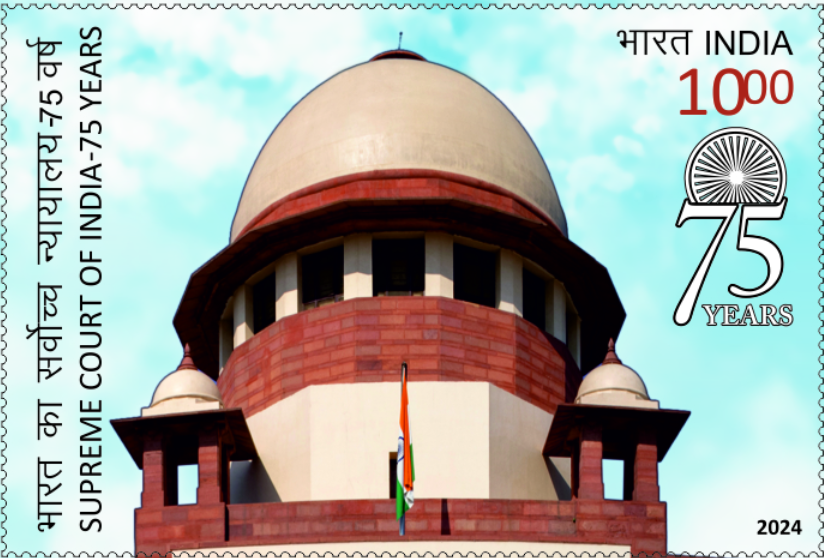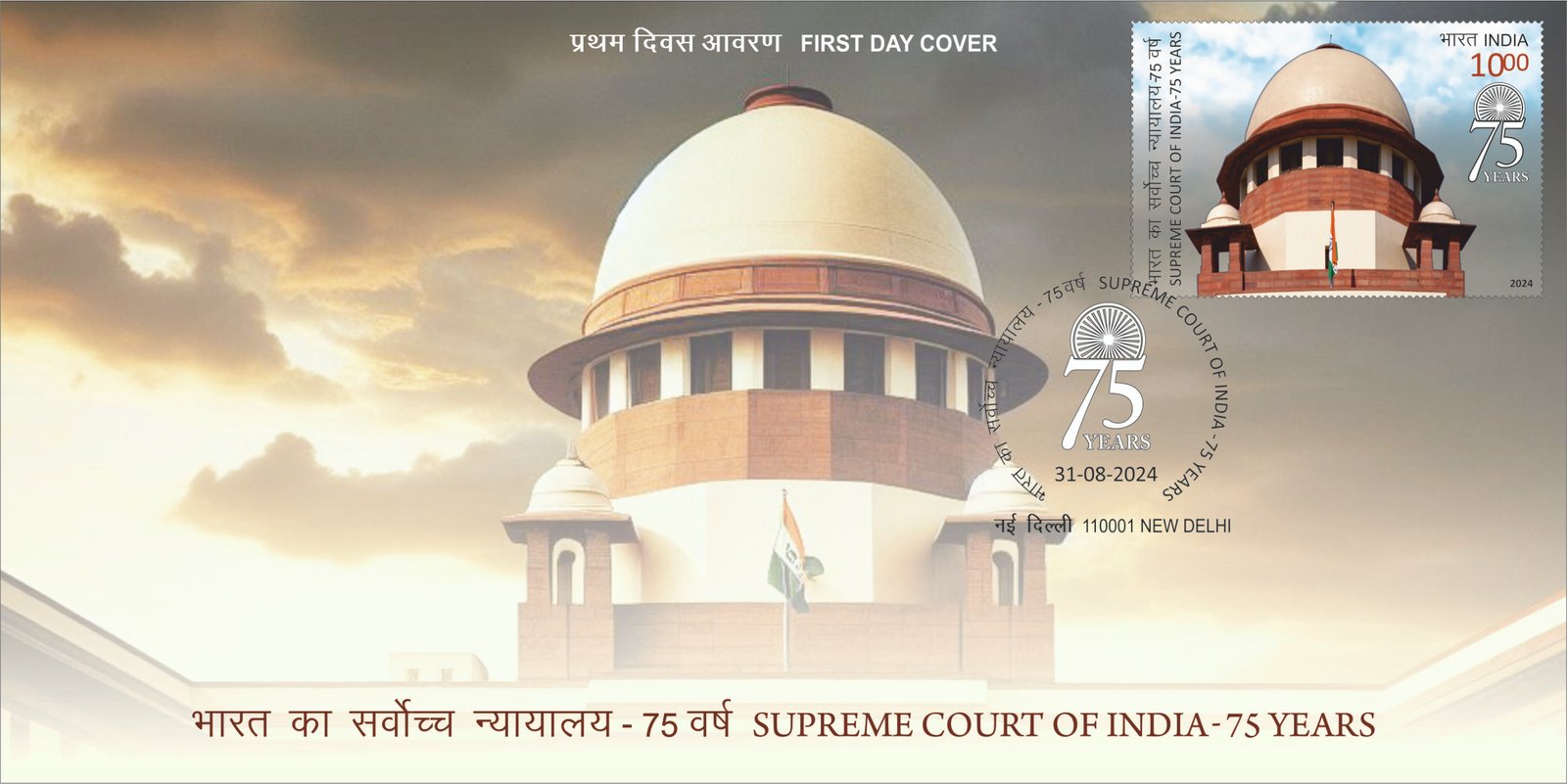Supreme Court of India – 75 Years

Technical Data
| Date of Issue | August 31, 2024 |
|---|---|
| Denomination | Rs. 10 |
| Quantity | 211,000 |
| Perforation | Harrow14½ |
| Printer | Security Printing Press, Hyderabad |
| Printing Process | Wet Offset |
| Watermark | No Watermark |
| Colors | Multicolor |
| Credit (Designed By) | Ms. Nenu Gupta |
| Catalog Codes |
Colnect codes IN 2024.08.31-01a Michel IN 4038 |
| Themes | Anniversaries and Jubilees | Buildings | Government Buildings |
Early Judicial Developments
By the beginning of the 18th century, judicial administration in the presidency towns began evolving with the establishment of a formal court hierarchy. The Supreme Court of Judicature (1823) and later the Indian High Courts Act of 1861 marked turning points, leading to the establishment of the High Courts of Calcutta, Bombay, and Madras (1862). These courts laid the foundation of India’s legal system and nurtured some of the country’s most eminent jurists.
Towards a Federal Court
During the Indian Round Table Conference of 1930, representatives of Indian States expressed their willingness to federate with British India, provided freedom from British control. Lord Sankey, the Lord Chancellor, stressed the necessity of a Federal Court in a federal setup.
The Government of India Act, 1935, accordingly, established the Federal Court of India (1937) with original and appellate jurisdiction, reducing dependence on appeals to the Privy Council.
Birth of the Supreme Court
Following independence in 1947 and the Abolition of Privy Council Jurisdiction Bill (1949), India established its own apex court. The Supreme Court of India was inaugurated on 28 January 1950, two days after India became a Sovereign Democratic Republic. Its first seat was in the Chamber of Princes, Parliament House, before moving to its present building in 1958, designed to symbolize the scales of justice.
Structure and Composition
The Constitution originally envisaged a Supreme Court with a Chief Justice and seven Judges. Today, the Court has a sanctioned strength of 34 Judges, including the Chief Justice. Judges are appointed by the President and retire at 65 years of age.
Eligibility requires either five years as a High Court Judge, ten years as an Advocate, or recognition as a distinguished jurist. Judicial independence is safeguarded by constitutional provisions, allowing removal of a Judge only through a rigorous impeachment process by Parliament.
Jurisdiction and Powers
The Supreme Court of India has original, appellate, and advisory jurisdiction:
- Original jurisdiction: Disputes between the Union and States or among States, and enforcement of Fundamental Rights under Article 32.
- Appellate jurisdiction: Appeals in civil and criminal cases from High Courts.
- Advisory jurisdiction: Matters referred by the President under Article 143.
A distinctive feature of Indian jurisprudence is Public Interest Litigation (PIL), enabling individuals or groups to approach the Court for matters of public welfare. Legal aid provisions further ensure that justice is accessible to all.
Legacy and Contribution
Over the decades, the Supreme Court has delivered landmark judgments, shaping India’s legal and constitutional framework. It continues to safeguard democracy, liberty, and equality, ensuring the rule of law and the protection of citizens’ rights.
Philatelic Tribute
The Department of Posts is proud to issue a Commemorative Postage Stamp on the Supreme Court of India, celebrating its historic journey and enduring contribution to India’s judicial system. The stamp honors the Court’s role as the guardian of the Constitution and the protector of fundamental rights of the people.
First Day Cover

